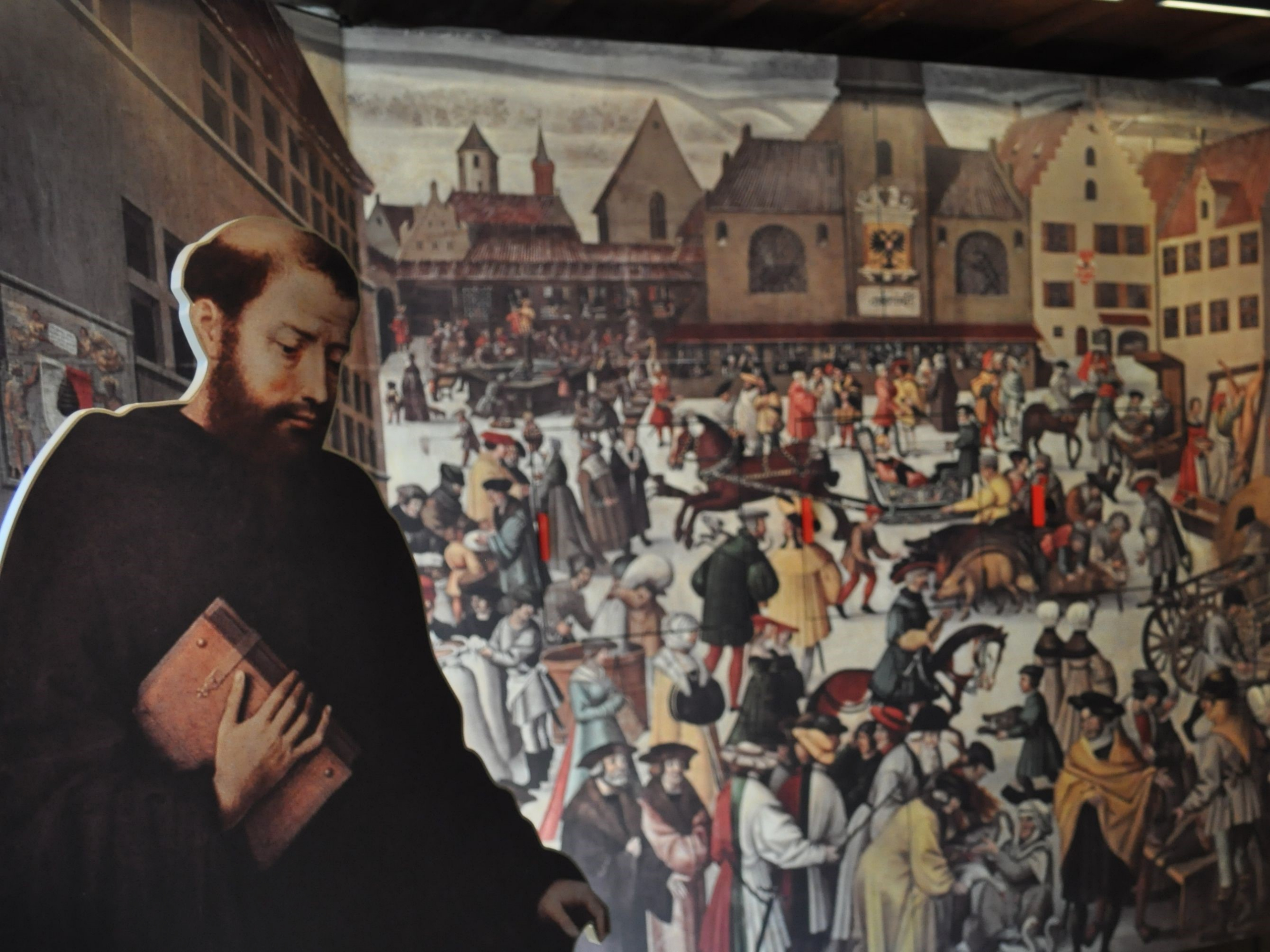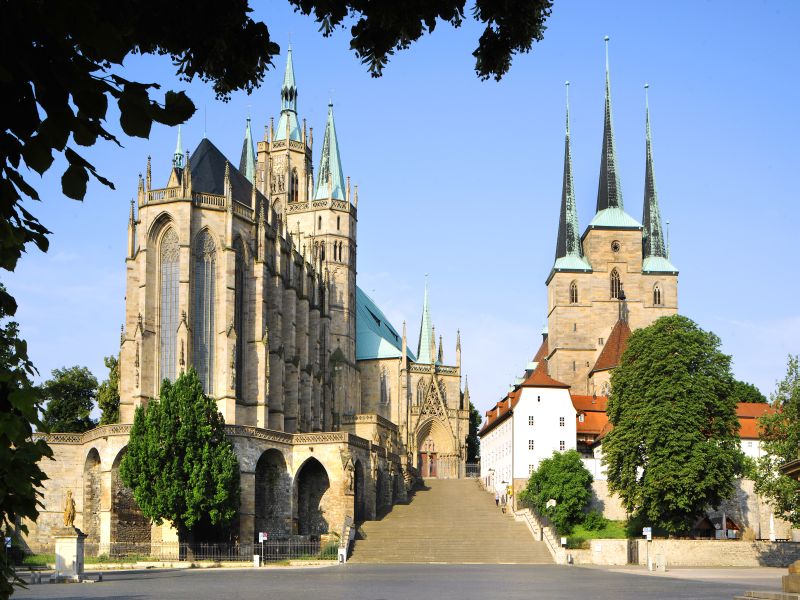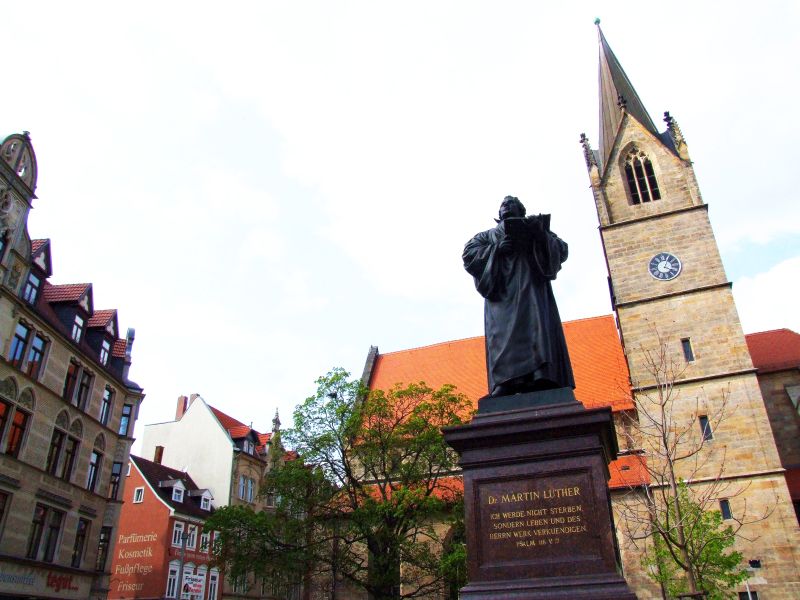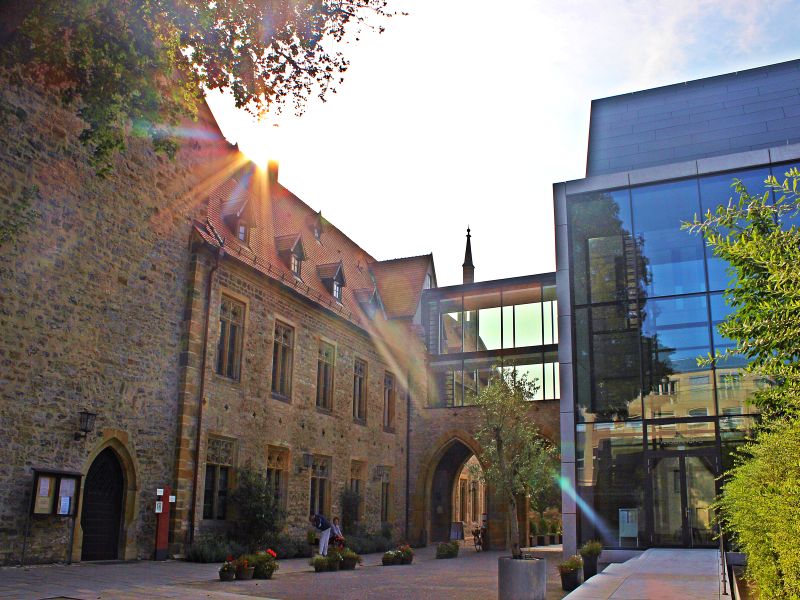THE COUNTRY OF MARTIN LUTHER
From the 16th century onwards, the knowledge of mankind grew virtually with every day. The scholars made big progresses in the interpretation of the world. The seafarers brought knowledge from new countries, plants, and animals.
Cartographer Martin Waldseemüller created the first globe in Freiburg that displays the New World cartographically and uses the name “America” for the first time…
The nation discovers its power



Martin Luther, too, vastly contributed to the revolutions of that time. As the Augustinian monk could not accept the delusion of relics and the selling of indulgences any longer, he published his critical Ninety-Five Theses in 1517. They received – distributed with Gutenberg’s new printing technology- great agreement amongst the population. More and more believers followed Luther’s reformatory ideas that led to the founding of the Lutheran Church.
The beginning of the Reformation was the end of unlimited power of the authorities. People discovered their individual personalities and became more courageous towards church and state. With his translation of the Bible, Martin Luther fostered the development of a standard version of the German language.
The time of the Reformation is closely connected to the history of the Historic Highlights of Germany as Martin Luther left behind important traces in many cities. In 1505, he received his master’s degree from the Faculty of Philosophy in Erfurt. After that, he entered a closed “Augustinerkloster” (Augustinian Monastery) as a monk.
Here, a visit to the unique historic library and the worth seeing permanent exhibition BIBEL – KLOSTER – LUTHER (Bible-Monastery-Luther) is recommended. There is even the possibility to stay in the monastery overnight! In 1507, Luther was ordained to the priesthood in the Kilian Chapel of the Erfurter Dom (Erfurt Cathedral). The Luther monument, too, tells about the life and works of the great reformer.



In 1518, Luther presented his Ninety-Five Theses at the “Disputation” – which was prompted by the Pope – in the Augustinerkloster (Augustinian Monastery) of Heidelberg. He also introduced his reformed Christian theology “theologica crucis”. Many of the present students became devotees of his ideas and were the driving force behind the Reformation in the South-West. On the occasion of Martin Luther’s 400th birthday in 1883, the Luther Eiche (Luther-Oak) was planted on the eastern side of the Peterskirche (St. Peter’s Church). Today, one can find the Luther Tafel (Luther Plaque) where the Augustinian Monastery used to stand once.
Further key events of the Reformation took place in the city of Augsburg. The first Protestant sermon was delivered in the Barfüßerkirche (Blackfriar’s Church) as early as 1524.
You can also visit the houses of the Fugger family where Luther was interrogated by Cardinal Cajetan on behalf of the Pope and was expected to revoke his theses.
He refused to deny his belief and had to flee in order to save his life. In 1530, the Augsburg Confession – formulated by Philipp Melanchton – was read out in the diet of the city. It was meant to become the founding document of the Lutheran Church and the basis of the creed for 600 millions of Protestants in the whole world. In the theological-historic museum Lutherstiege in the “St. Anna-Kirche (St. Anna Church), you will find originals of Luther’s writings and the famous portrait of the reformer that was painted by Lucas Cranach the Elder.
© Image Rights: Augustinian Monastery/Cathedral and St. Severus – ETMG, Luther’s Steps – Regio Augsburg

